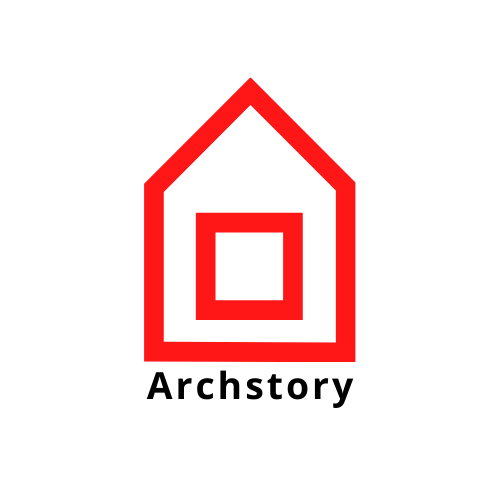
BIG+Heatherwick Studio-Google Bay View
이 건물은 구글의 미래를 위한 인간중심적이고 지속 가능한 혁신과 건설 산업 및 그 이상을 위한 확장 가능하고 복제 가능한 솔류션을 창출하려는 구글의 야망을 구현한다. 프로젝트 시작시 구글의 디자인 브리프에서 정의한 세가지 테마인 혁신, 자연, 커뮤니티에 기반을 둔 디자인은 협업과 공공 창작을 고무시키는 유연성과 탁월한 사용자 경험에 의해 주도된다. 팀 공간은 위쪽에 있고 모임 공간은 아래쪽에 있어 집중 영역과 협업 영역을 분리하는 동시에 두 영역에 모두 쉽게 접근할 수 있다.
모든 건물에 적용되는 이 캐노피 상부 구조는 가장 기능적이고 에너지 효율적이며 경제적인 건물 솔루션을 달성하기 위한 다년간의 노력의 결과이다. 지붕 구조는 최상의 음향제어를 제공하고 열획들을 최소화하며 전체 에너지 부하를 낮추고 구글이 외부에서 최대량의 태양광 PV를 수확할 수 있도록 한다. 또한 과도한 눈부심 없이 내부 작업 공간에 채광을 제공하여 건물의 모든 책상에서 외부를 볼 수 있고 하루종일 태양빛에 접근 할 수 있다.
Designed by BIG-Bjarke Ingels Group and Heatherwick Studios in close collaboration with Google, Bay View is Google’s first-ever ground-up campus with the mission to operate on carbon-free energy, 24 hours a day, seven days a week by 2030. The buildings deliver on Google’s ambition to create human-centric, sustainable innovations for the future of Google’s workplace as well as scalable, replicable solutions for the construction industry and beyond.
Located on a 42-acre site at the NASA Ames Research Center in Silicon Valley, the Google Bay View Campus, consisting of three buildings, totals 1.1 million sq ft – including 20 acres of open space, two workspace buildings, a 1,000-person event center, and 240 short-term employee accommodation units. All three buildings are constructed as lightweight canopy structures optimized for interior daylight, views, collaboration, experiences, and activities.
Bay View’s three new buildings are part of Google’s ambition to be the first major company to operate on carbon-free energy, 24 hours a day, seven days a week by 2030. The site is expected to achieve a LEED-NC v4 Platinum certification and become the largest facility ever to attain the International Living Future Institute (ILFI) Living Building Challenge (LBC) Water Petal Certification.
Anchored in three themes defined by Google’s design brief at the beginning of the project – innovation, nature, and community – the design is driven by flexibility and extraordinary user experience that inspires collaboration and co-creation. Team spaces are on the upper level and gathering spaces are below, separating focus and collaborative areas while still providing easy access to both. The second-floor design has variations in floorplates to give teams a designated “neighborhood” area that is highly flexible to change with their needs.
The Bay View Buildings are split across only two floors, with desks and team spaces on the upper level, and the amenity spaces below. A series of indoor “courtyards” throughout the buildings connect the two levels, giving teams easy access to cafes, kitchenettes, conference rooms, and all-hands spaces. The courtyards also encourage the physiological benefits of physical movement when circulating between levels and different modes of work, and double as wayfinding devices.
Above, the large-span canopy with average orthogonal column spans allows the entire second-level workspaces to be open and connected under one roof. These workspaces prioritize access to natural light and views, with reduced glare through carefully designed clerestory windows punctuating the canopy.
Rather than being segmented by excessive columns and support walls, the structural innovation of the canopy roof allows for a wide-open workspace; every person has equal access to views across the floorplate, and through the perimeter facade and clerestory windows to the outdoors. On the exterior, all three buildings feature a first-of-its-kind “dragon scale” solar skin roof equipped with 50,000 silver solar panels that generate a total of nearly seven megawatts of energy.
This canopy superstructure applied across all the buildings is the result of a multi-year effort to achieve the most functional, energy-efficient, and economical building solution: a net system made of tubular steel with simple clerestory windows between the canopy bays and an opaque roof structure offers the best acoustic control, minimizes thermal heat gain, lower overall energy loads, and allows Google to harvest the maximum amount of solar PV on the outside. It also provides daylight to the workspaces inside without excessive glare, allowing every desk in the building to have views of the outside, and access to daylight throughout most of the day.
Bay View operates entirely on electric energy and the campus houses the largest geothermal pile system in North America, estimated to reduce carbon emissions by almost 50% and water used for cooling by 90%. In addition, on-site systems built by Google collect, treat, and reuse all stormwater and wastewater and provide habitat restoration, sea level rise protection, and access to the beauty of natural wetlands for both Googlers and the public on the nearby Bay Trail.
Bay View is also a Living Building Challenge (LBC) water-positive campus and is on track to be the largest project ever certified by the International Living Future Institute (ILFI) under any of its programs, which are recognized as the most ambitious regenerative building rating systems in the world.
Google’s mission to unlock advancements for the benefit of the entire industry has led to several scalable solutions in working on the Bay View campus: increasing modular construction, geothermal at new scales, innovation in PV design, a permitted blackwater system, waste diverted from landfill, improved total number of products vetted for Red List ingredients, and landscape designed to advance water stewardship and create valuable habitat for threatened wildlife.
Overall, the Google Bay View campus has forged a new framework, materials language, and ecological approach that will help push both the future of the workplace and the built environment-at-large, forward.
Photography by Iwan Baan






from archdaily
